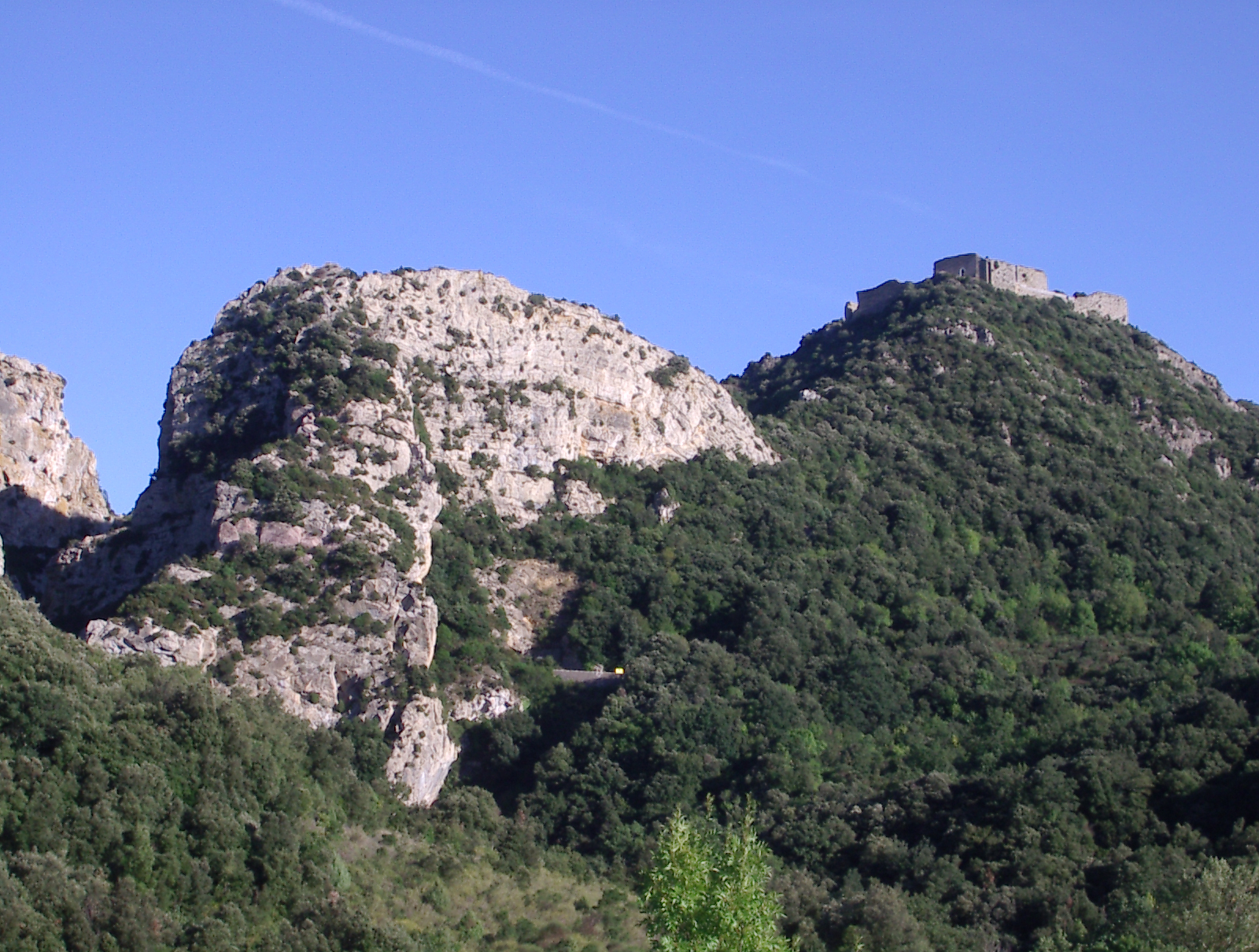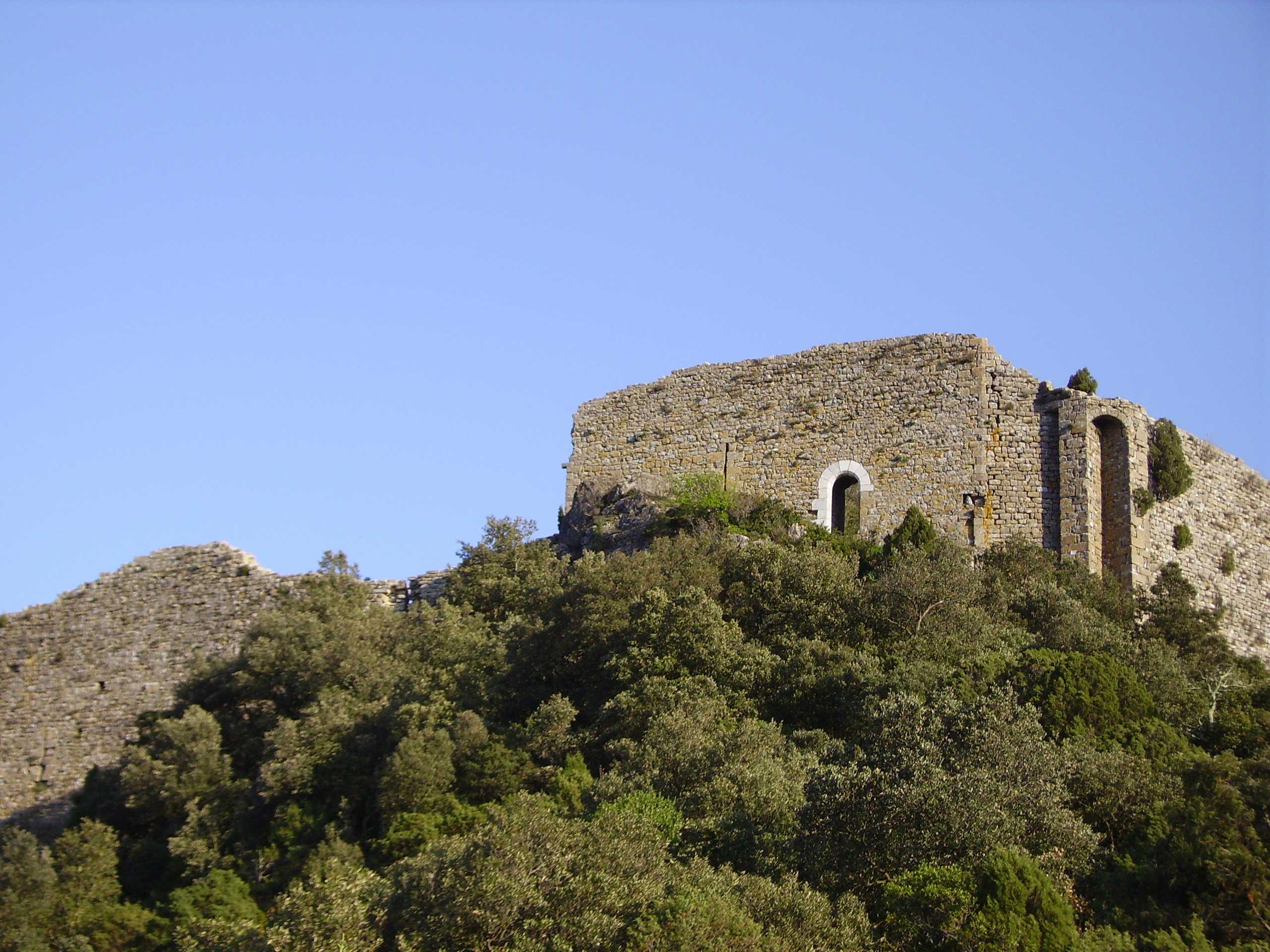Château De Termes on:
[Wikipedia]
[Google]
[Amazon]
The Château de Termes (


Official site of the castle, in english
*
Languedocien
Languedocien (French name, ), Languedocian or Lengadocian (), is an Occitan dialect spoken in rural parts of southern France such as Languedoc, Rouergue, Quercy, Agenais and Southern Périgord. It is sometimes also called Languedocien-Guyennai ...
: ''Castèl de Tèrme'') is a ruined castle near the village of Termes in the Aude ''département
In the administrative divisions of France, the department (french: département, ) is one of the three levels of government under the national level (" territorial collectivities"), between the administrative regions and the communes. Ninety ...
'' of France
France (), officially the French Republic ( ), is a country primarily located in Western Europe. It also comprises of overseas regions and territories in the Americas and the Atlantic, Pacific and Indian Oceans. Its metropolitan area ...
. It is one of the so-called Cathar castles.
History
Built on a promontory, defended on three sides by formidable deep ravines, the crumbling ruins of the castle cover an area of 16 000m². Held by theCathar
Catharism (; from the grc, καθαροί, katharoi, "the pure ones") was a Christian dualist or Gnostic movement between the 12th and 14th centuries which thrived in Southern Europe, particularly in northern Italy and southern France. Follo ...
heretic Ramon (Raymond) de Termes, the castle only fell to Simon de Montfort
Simon de Montfort, 6th Earl of Leicester ( – 4 August 1265), later sometimes referred to as Simon V de Montfort to distinguish him from his namesake relatives, was a nobleman of French origin and a member of the English peerage, who led the ...
after a siege lasting four months, from August to November 1210, the hardest siege of the first period of the Albigensian Crusade. Following an exceptionally dry summer and autumn, the empty water tanks led Raymond to offer surrender. However, as the crusaders advanced to possess the castle, they were met with a hail of arrows. A heavy storm overnight had replenished the cisterns and the defenders were able to hold out a little longer.
Later, weakened from dysentery, and exposed to the fire of numbers of siege weapons, the garrison attempted unsuccessfully to creep out at night. The alarm was raised, the fugitives caught and killed, and Raymond surrendered the castle. After de Montfort's death, Raymond regained possession of the castle but was soon forced to give it up again, this time to the King of France.
Rebuilt in the 13th century as a royal garrison, the castle was one of the "sons of Carcassonne
Carcassonne (, also , , ; ; la, Carcaso) is a French fortified city in the department of Aude, in the region of Occitanie. It is the prefecture of the department.
Inhabited since the Neolithic, Carcassonne is located in the plain of the Au ...
" (five castles defending the border with Aragon and later Spain
, image_flag = Bandera de España.svg
, image_coat = Escudo de España (mazonado).svg
, national_motto = ''Plus ultra'' (Latin)(English: "Further Beyond")
, national_anthem = (English: "Royal March")
, i ...
). When the border moved further south in the 17th century, the castle lost its function. It was taken over by a band of brigands who used it as a base from which to terrorise and pillage the surrounding country. To stop this, it was demolished by royal decree - a master mason from Limoux
Limoux (; oc, Limós ) is a commune and subprefecture in the Aude department, a part of the ancient Languedoc province and the present-day Occitanie region in southern France. Its vineyards are famous for being first to produce sparkling w ...
spent 1653 and 1654 blowing up the walls with gunpowder and reducing them to piles of rubble. The bill for this work exists today: 14,922 ''livres
The (; ; abbreviation: ₶.) was one of numerous currencies used in medieval France, and a unit of account (i.e., a monetary unit used in accounting) used in Early Modern France.
The 1262 monetary reform established the as 20 , or 80.88 gr ...
'' and 10 '' sous.''


The castle today
Steps to preserve the site were taken in the 20th century. It has been classified as a '' monument historique'' since 1989. Since 1989, it has been the property of thecommune
A commune is an alternative term for an intentional community. Commune or comună or comune or other derivations may also refer to:
Administrative-territorial entities
* Commune (administrative division), a municipality or township
** Communes of ...
of Termes. It is a 15 to 20 minutes walk from the village and open to visitors.
The site offers impressive views of the Terminet Gorges.
See also
* Cathar castles *List of castles in France
This is a list of castles in France, arranged by Region and Department.
;Notes:
# The French word ''château'' has a wider meaning than the English ''castle'': it includes architectural entities that are properly called palaces, mansions or vine ...
External links
Official site of the castle, in english
*
References